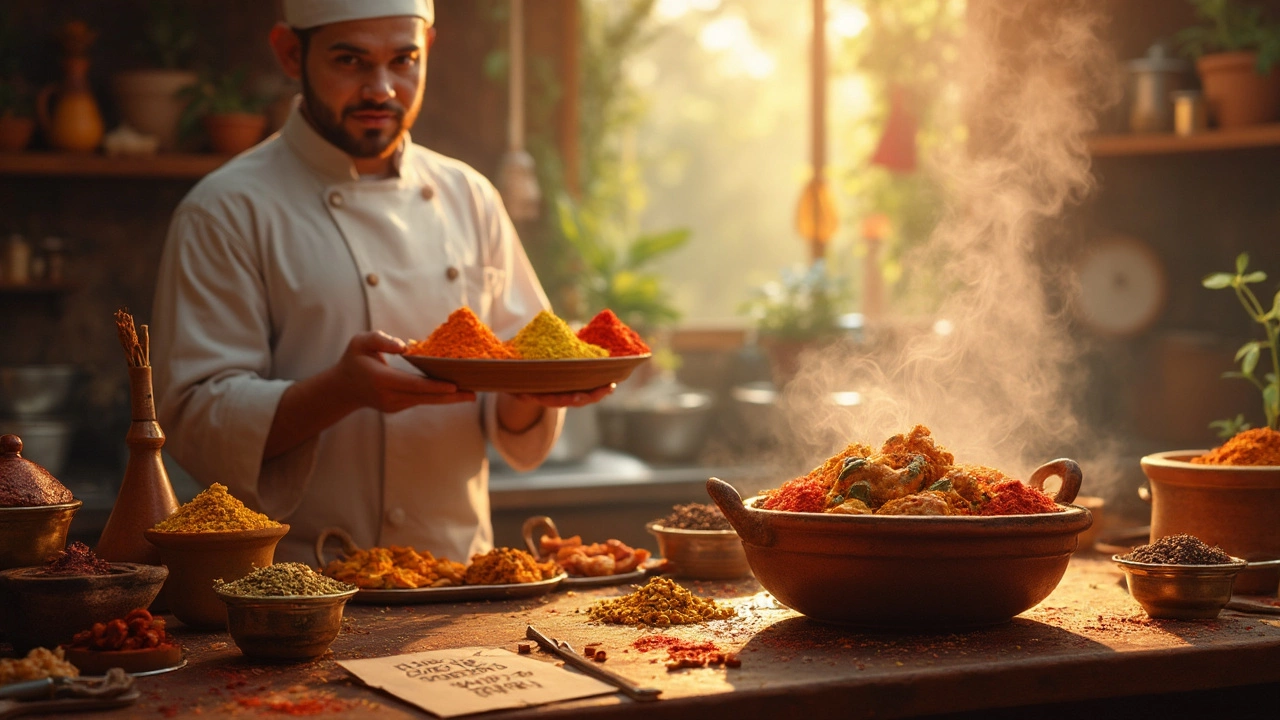Improve Flavor: Practical Ways to Boost Taste in Indian Cooking
When working with Improve Flavor, the practice of making food taste better, smell richer, and feel more satisfying. Also known as taste enhancement, it often relies on smart use of spices, effective marination, precise cooking techniques, and clever ingredient swaps. This combo lets you turn a simple curry into a memorable bite.
Spices are the first line of attack when you want to improve flavor. They bring color, aroma, and heat. A pinch of cumin seeds can add earthiness, while a dash of garam masala lifts the whole dish. The key is to toast them just enough to release their oils, then grind or crush before they meet the main ingredients. That tiny step makes a massive difference in taste.
Marination is the second powerhouse. Soaking meat, paneer, or even veggies in a mix of yoghurt, lemon juice, and spices lets acids and enzymes break down proteins. The result? Juicier bites that carry the seasoning deep inside. A typical 3‑2‑1 ratio—three parts acid, two parts oil, one part spice—works for most Indian dishes. Remember to keep the marinating time short for delicate items like fish, but longer for tougher cuts.
Cooking techniques act like a bridge between ingredients and flavor. Tempering (or "tadka") blows the taste of whole spices onto hot oil, creating a fragrant base. Roasting tomatoes before adding them to a sauce concentrates their sweetness. And deglazing a pan with a splash of water or stock pulls up the caramelized bits, adding depth. Each method changes the chemical profile of the food, pushing the flavor envelope further.
Ingredient swaps give you a shortcut when a recipe feels flat. Adding a pinch of soda to dosa batter, for example, raises the pH and makes the crepes crispier while giving a subtle lift in taste. Switching red onions for white onions in a chicken curry can soften the sharpness and let the spices shine. Even using a splash of coconut milk instead of cream can balance heat with a hint of sweetness.
Balancing acidity and sweetness is another secret weapon. A squeeze of lime at the end of a dal or a drizzle of honey in a spicy chutney can round off harsh edges. Think of flavor as a seesaw—too much of one side throws everything off. Small adjustments keep the dish harmonious and keep diners coming back for more.
Here’s a quick cheat sheet to keep handy:
- Toast whole spices before grinding.
- Use a 3‑2‑1 marination ratio for meat.
- Finish with a dash of acid (lime, tamarind) or sweetener (jaggery, honey).
- Try soda in batters, onion swaps, or coconut milk in place of cream.
- Always taste and adjust after each major step.

What Makes Chicken Curry Taste Better?
Discover the secrets to enhancing the flavor of chicken curry. Learn about the importance of choosing the right spices, the benefits of marinating the chicken, and how cooking techniques affect the taste. This article provides practical tips to elevate your curry game. Dive into the details of what truly makes chicken curry stand out.
- Chutney Recipes (13)
- General (11)
- Healthy Living (10)
- Easy Indian Recipes (9)
- Chicken Curry Recipes (9)
- Healthy Indian Snacks (8)
- Paneer Recipes (7)
- Dal Recipes (7)
- Street Food (7)
- Dosa Recipes (7)
-
Can You Use 2 Weeks Old Dosa Batter? Safety, Tips, and Surprising Facts
16 May 2025 -
Best Healthy Indian Restaurant Foods: What to Order and Why
12 Jul 2025 -
A Guide to Very Mild Indian Dishes: Flavors Without the Fire
25 Jul 2025 -
Most Luxurious Desserts in India: A Sweet Indulgence
28 Feb 2025 -
How Long Should I Soak Dal Before Cooking? Essential Tips for Simple Dal Recipes
14 Jun 2025
20.03.25
Kaia Binari
0